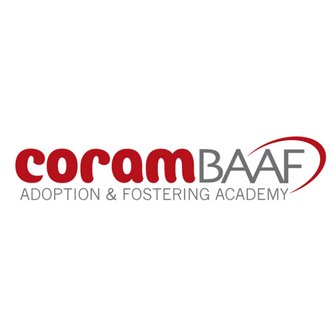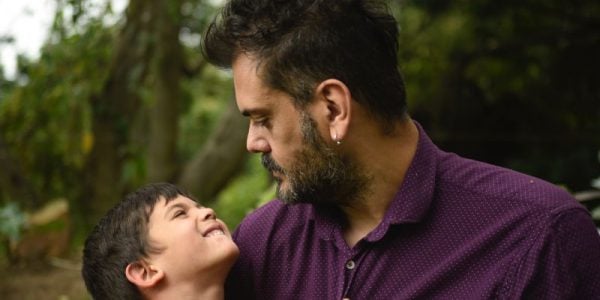Briefing paper
This briefing paper highlights the main findings of research led by John Simmonds OBE (CoramBAAF) and Professor Judith Harwin (Lancaster University) in 2019. In addition to reviews of the literature on special guardianship in England, and the international evidence on kinship care, the research also captured practitioner insights.
The use of special guardianship orders (SGOs)—where one or more individuals, usually family members, are given parental responsibility for a child who cannot live with their birth parents—is increasing. Over 21,000 children have been placed with special guardians following care proceedings since 2010/11. It has become a significant permanence option for children who have been neglected or abused. As the proportion of SGOs has risen, so the proportion of placement orders paving the way for adoption fell between 2010/11 and 2016/17. This shift is one of the most significant trends in recent years.
An evidence review commissioned by Nuffield Family Justice Observatory in 2019 found special guardianship to be an important permanence option for the right child and the right family. However, for this to be so, the system needs to operate in a coherent, timely, evidence- informed way.
The review provided the most up-to- date assessment of the current evidence relating to special guardianship. Combined with practitioner insight, the research provides a framework to guide future action to ensure that children who are subject to SGOs have the best possible opportunities to thrive.
The review highlighted the lack of careful assessment of—and preparation and ongoing support for—special guardians, who are often asked to care for children with complex emotional and behavioural difficulties.
Background to the research
When special guardianship came into law in 2005 (through the Adoption and Children Act 2002 amending the Children Act 1989), there were a number of routes to the making of the order, including a private law application being made by the current carers where they had been caring for the child for a minimum of one year or more. This then provided direct evidence of the quality of the care provided over that year and the child’s response to this.
The act also allows an order to be made by the court that does not require a minimum period of the care of the child. This has raised concerns about whether the time, evidence and resources available to the courts and the local authority are sufficient to ensure that the order is in the best long- term interests of children and their carers. It also presents challenges in providing special guardians with adequate preparation and support for the long-term consequences of this life-changing responsibility.
The absence of a robust framework is at the centre of many cases, including the Re P-S judgment. In this case, all parties had agreed that SGOs should be made in favour of the children’s respective paternal grandparents. However, the judge was concerned that the children had not previously lived with them and he wished the placements to be tested in practice. He therefore made final care orders instead of SGOs, drawing on informal guidance from a designated judge from another area. His intention was that, assuming the placements went well, the local authority would assist the special guardians to make an application for an SGO in the future. The proposed special guardians were not made party to the proceedings and were not legally represented. The Court of Appeal was asked to consider whether the judge had been wrong to decline to make SGOs in favour of the paternal grandparents before the children had lived with them.
The judgment identified the need to make authoritative guidance available to resolve what had become a contentious set of issues. In July 2018, the President of the Family Division invited the Family Justice Council to draft authoritative, evidence- based guidance to assist courts in making SGOs—and specifically to address the issues raised in the case of Re P-S.
Nuffield Family Justice Observatory commissioned a rapid evidence review to contribute to the drafting of the guidance and to help inform decision-making by frontline practitioners. Co-produced by CoramBAAF, led by John Simmonds OBE, and Professor Judith Harwin and her team at Lancaster University, it involved practitioner consultations combined with reviews of the English research studies on special guardianship and international research on kinship care.
Full papers were published in 2019 and are available at: www.nuffieldfjo.org.uk/resource/special- guardianship-a-review-of-the-evidence
The issues for consideration were scoped by family justice practitioners, policy leads and academics. As the work progressed, issues were discussed with members of the Family Justice Board, led by HHJ Jane Probyn and David Williams, and a sub- group of the President’s Public Law Working Group, led by Mr Justice Keehan.
Note: The studies informing this briefing paper were published between 2009 and March 2019. Since then, a limited number of small-scale qualitative studies have been published on special guardians’ views in England. They cover contact arrangements, family relationships, and the role and needs of special guardians. They indicate this is an important developing field of inquiry for the sector. In addition, internationally there have been a small number of systematic/narrative reviews examining the role of grandparents in child rearing and relational factors that influence outcomes for children in foster and kinship care.
Key research findings
Overall, there are significant benefits to placing a child with family members.
However, special guardianship is a life-changing order for special guardians, children, birth parents and other family members.
Given the scale of SGOs, there is a major need to understand the outcomes for children, the stability of special guardianship, and the impact on carers.
Outcomes
The small number of studies that have investigated outcomes conclude that the majority of children fare well in special guardianship in relation to their safety, well- being and developmental progress.
- Government administrative data has shown that children on SGOs have better educational outcomes at Key Stages 2 and 4 than looked-after children.
- In one study (Harwin et al. 2019), children’s safety and well-being outcomes were compared at the start and end of proceedings and at the end of the follow-up (the SGOs had been made in 2014/15 and children were tracked for a maximum of three years). Children’s safety, health and well-being outcomes improved for the majority on a range of measures. But some developmental outcomes deteriorated— this may reflect better identification by agencies once pre-school children started school, as well as the emergence of new problems (Dickens et al. 2019).
- Another study (Wade et al. 2014) found that children’s developmental and well-being outcomes were rated positively for the majority of children by the special guardians. Overall, most children were reported to be ‘healthy, thriving and normally happy’.
International research on kinship care suggests that:
- Children in kinship care record fewer externalising (aggression and conduct disorders) behavioural problems than children in mainstream foster care. The evidence is mixed regarding mental health.
- Educational attainment for children in care is poorer than in the general population of children. No significant differences have been found between children in kinship care or foster care in terms of improvements in educational attainment during their kinship or foster placement.
Stability
The evidence on the stability (defined in the study as ‘the absence of disruption’) of special guardianship is crucial in establishing the confidence of the order as a permanence option. The evidence is consistent and robust.
Special guardianship is a stable option when measured by whether the child is returned to local authority care or is made subject to further care proceedings (‘disruption rate’). Overall, SGOs have a very low rate of return.
Stability has been examined nationally in three large-scale English studies (Wade et al. 2014; Selwyn et al. 2014; Harwin et al. 2019).1 All three estimated the likelihood of disruption within five years of making the order. By choosing this timeframe, they were able to compare SGO disruption rates with those for other legal order types and be confident that ‘apples and pears’ were not being compared. The findings from the studies are broadly consistent.
Using Department for Education (DfE) data on 5,921 children placed on SGOs between 1 December 2005 and 31 March 2011, Selwyn and Wade found:
- the risk of disruption judged by return to local authority care was 5.7% over five years
- the five-year rate is higher than for adoption (0.72%) but is substantially below that for residence orders/child arrangements orders (14.7%).
Using Cafcass data, based on a total of 140,059 children in 81,758 cases that concluded between 2010/11 and 2016/17, Harwin found:
- the risk of return to court for further care proceedings within five years of making the SGO was approximately 5%
- the five-year rate is lower than for residence orders/child arrangement orders (approximately 10.5%)
- this means that for every 100 children placed on an SGO, five of those placements are at risk of returning to local authority care or of having further care proceedings within five years.
These figures are based on reported disruptions only, so they may underestimate the actual degree of placement instability that does not come to the attention of local authorities, or through challenges made by birth parents or other relatives to revoke the order.
International evidence indicates that kinship care can provide durable placements for children, with lower rates of placement breakdown than for children in foster care.
Impact on carers
The research indicates that most special guardians thought the SGO was the right order for them and their child because it gave them legal security and enhanced their parental decision-making powers.
However, there can be negative effects on the health and well-being of these carers, and the likely positive value of continuity and unconditional commitment to the child may be reduced in the context of considerable financial, housing, relationship or neighbourhood strain.
Furthermore, special guardians are often asked to care for children with complex emotional and behavioural difficulties. There is a higher risk that a child’s placement will break down in these circumstances.
Some experiences and views regarding local authorities and courts were that:
- the process was confusing and stressful
- a limited amount of information was made available about the child
- a lack of legal and social work advice affected the ability to advocate for financial and other support
- the nature and implications of special guardianship were not always clear
- special guardians did not always feel they had been well prepared for the role
- contact arrangements with birth parents could be problematic and conflictual.
A strong theme was the importance of support. It could be difficult to access for many reasons—including both structural and internal barriers.
As with all child placement options, major adjustments are required by carers and it is important for services and support to be provided that enable those adjustments to be made. This includes practical arrangements such as finance and housing, parenting support, support with the child’s health, mental health and education needs and adjustments to family relationships.
Risk and protective factors
The evidence review highlighted the importance of a thorough assessment of the quality of the child’s relationship with their prospective carer, and the need for social workers and courts to pay particular attention to child risk factors—particularly in relation to older children and those with emotional and behavioural difficulties—in their assessments, support plans and decisions on the suitability of a special guardian.
Quality of relationships
Evidence suggests insufficient consideration is given to the prospective special guardian’s existing relationship with, and experience and knowledge of the child, and the wishes, feelings and needs of the child.
As envisaged in the original design of the SGO, a strong bond, based on a settled, pre-existing and established relationship prior to applying for an SGO acts as a strong indicator of placement stability. The research found that, where bonds were weak, it was harder for the special guardians to manage emotional and behavioural difficulties that were widespread.
The evidence regarding the importance of a tried-and-tested relationship between children and their special guardians on the likelihood of disruption is not wholly consistent. However, in Harwin’s local authority case file audit, there was no difference in disruption rates between children who moved to live with their special guardian before or during the proceedings and those who were placed after the SGO had been made—and the placement was therefore untested. This finding is unexpected and may be due to small sample size and the young age of the children and the low probability of disruption.
Child-level factors
Wade, Selwyn and Harwin found children’s ages to be a factor in disruption.
- Older age at placement in both Wade and Selwyn was associated with return to local authority care, peaking in the Wade study at ages nine and 10, and ranging from four to 11 in Selwyn’s study.
- Harwin found that children aged five to nine were at maximum risk of returning to court, followed by children aged 10 and above.
- Disruption is least likely amongst infants and children under the age of four.
Other predictors from Selwyn’s study were related to the reasons for entry into care, the number of moves made by the child prior to the SGO and to the type of special guardian. Selwyn found that:
- children placed on SGOs who came into care due to acute stress or family dysfunction were nearly twice as likely to face disruption as those who entered care because of abuse and neglect
- children placed with unrelated carers on an SGO were nearly three times more likely to have disrupted placements than those placed with kin
- the number of moves in care before placement with the special guardian predicted disruption—each move prior to placement increased the risk of disruption by nearly 1.5 times.
The in-depth case file audit in Wade also found that the number of placement moves prior to the SGO predicted disruption. Additional predictors were:
- if the child’s last placement prior to the SGO was not with a relative
- if the child’s SGO was made to a carer with whom the child had not previously been living
- if the bond was assessed by social workers as being weak at the time of the placement
- if the children had emotional and behavioural difficulties.
In Wade’s survey sample of special guardians, two-thirds of the children whose placement disrupted before the age of 17 were rated by their special guardian to have serious emotional and behavioural difficulties.
Challenging behaviour was also a factor to emerge in the qualitative analysis of the 10% of cases that disrupted in Harwin’s local authority case file follow-up.
In both studies, there was an interaction between older age, emotional and behavioural problems and disruption. No identified permanent placement change occurred for children aged four or under in Harwin’s study.
The Special Guardianship (Amendment) Regulations 2016 introduced a requirement that due consideration must be given to any significant harm that the child had experienced, and the parenting capacity of the prospective special guardians must be able to address the consequences of this on the child’s development.
International evidence suggests children who are older, who have histories of maltreatment, behavioural difficulties and placement instability, are at heightened risk of placement instability across a number of placement types, including kinship care.
Supervision orders and SGOs
SGOs were designed as a standalone order with a support plan integrated within the requirements of the order. But, within five years of implementation, 11% of SGOs were being made alongside a supervision order.
The Special Guardianship Review carried out by the DfE (2015) identified the use of supervision orders with SGOs as a potential indicator of placement instability. Small- scale empirical studies drew attention to the use of supervision orders when placements were judged to be risky, but also shed light on other reasons for using them (Research in Practice 2015a, b, c). These included monitoring and support, offsetting risks in the face of poor-quality assessments and helping to ensure the involvement of other authorities, should the child move to a different area. Similar reasons had emerged from earlier research (Hunt and Waterhouse 2013; Hunt 2016).
Analysis of the Cafcass national administrative dataset in Harwin found a marked rise in the use of supervision orders alongside an SGO between 2010/11 and 2016/17. The study also found that the risk of SGO cases returning to court for further care proceedings within five years increases by approximately 2% when a supervision order is made.
These findings do not allow us to establish why a supervision order increases the risk of return to court for care proceedings. It could be that SGOs made alongside a supervision order are more fragile in the first place, as identified by the DfE review, or that these cases are monitored by the local authority more closely—or a combination of the two.
For some special guardians, a supervision order was seen to be helpful in managing difficult relationships. The Public Law Working Group’s most recent report has recommended that supervision orders to accompany an SGO should only be used in exceptional circumstances.
A successful placement is more likely if:
- there is greater integration of the child into the family
- children have fewer emotional and behavioural difficulties
- special guardians feel well prepared for their roles
- there is greater support from the special guardian’s family
- contact with birth parents is safe, positive and supportive.
Key considerations
Has a viability assessment been undertaken by a skilled professional?
There is widespread dissatisfaction and frustration with the assessment process. With family members often not being identified until after proceedings have started, there can be a significantly lower standard of assessment compared to adoption or fostering.
The statutory 26-week timescale can significantly affect the full and proper consideration of the suitability of family members when making an SGO.
Viability assessments are sometimes allocated to children’s social workers who have little experience of family placement issues.
Has the prospective special guardian received full information about the meaning, significance and responsibilities of an SGO?
Prospective special guardians do not have party status in proceedings, and this affects their ability to reach an informed decision as to the appropriateness and implications of the SGO. It can leave them ill-prepared for their role. The stress and confusion of the process can be amplified by any disagreements with the child’s parents or other family members.
Preparation is described as ‘almost non- existent’ and ‘ad hoc’. There is no regulatory requirement to ensure preparation and training is available as there is with adoption or fostering.
The research review indicated that risks can be mitigated by helping special guardians to fully understand their role via appropriate preparation, legal advice and tailor-made support for them and their children.
Is an appropriate support plan being put in place?
There is a need for support plans to address both the risk and protective factors in what is a life-changing decision for a child and their carers, and for plans to identify ways that risks might be mitigated through appropriate support services.
Support plans should be based on a comprehensive evidence-based assessment of short and long-term needs as required by the Special Guardianship Regulations 2005. They must include alignment with entitlements that apply to adoption and/or foster care such as parental leave, housing priority and benefits.
Support services should be available locally that comply with the Special Guardianship Support Regulations 2005.
Research gaps and limitations
As a relatively new legal order, there is currently less research evidence on SGOs than, for example, adoption or fostering, and the evidence base is currently limited. The most marked gaps in knowledge relate to children’s developmental outcomes and experiences and how to effectively manage contact.
- The existing research on SGOs in England is limited and there are no studies from Wales.
- Only a small number of studies have investigated child outcomes empirically and there have been limited opportunities for long-term tracking given the relatively recent introduction of SGOs.
- Many studies do not sufficiently analyse the potential impact of pre-care characteristics on children’s short and longer-term outcomes.
- There are no robust studies of the broader outcomes for children that compare outcomes for adopted children and those in kinship care.
- There has been scant analysis of the impact of contextual factors (variables) on children’s outcomes in kinship care.
- The majority of research considers context only in terms of child and carer demographics; however, the family socio-economic climate and neighbourhood factors are also thought to be important.
- There are a number of small studies on children’s views of kinship care more generally, but a strong conclusion is that there is a dearth of studies on children’s experiences and views of special guardianship.
- Future research is needed to better understand how best to promote, support and sustain positive contact arrangements between family members.
1 Hereinafter these studies are referred to as ‘Wade’, ‘Selwyn’ and’ Harwin’.
References
Department for Education (DfE). (2015). Special guardianship review: report on findings. Government consultation response. London: DfE.
Dickens, J., Masson, J., Garside, L., Bader, K. and Young, J. (2018). Reforming care proceedings 2: children’s outcomes. Norwich, UK: University of East Anglia.
Harwin, J., Alrouh, B., Golding, L., McQuarrie, T., Broadhurst, K. and Cusworth, L. (2019). The contribution of supervision orders and special guardianship to children’s lives and family justice. London: Centre for Child & Family Justice Research, Lancaster University.
Hunt, J. and Waterhouse, S. (2013). It’s Just Not Fair! Support need and legal status in family and friends care. London: Family Rights Group.
Hunt, J. (2016). Key points from English research on special guardianship in England: issues, concerns, recommendations. Prepared for the Welsh Government Special Guardianship Review Technical Group 30 August 2016. Unpublished paper.
Hunt, J. (2020). Practice tool. Assessing and supporting family and friends care. Totnes: Research in Practice/Dartington Hall Trust.
Research in Practice. (2015a). Impact of the family justice reforms on front-line practice. Phase One: The Public Law Outline. London: DfE.
Research in Practice. (2015b). Impact of the family justice reforms on front-line practice. Phase Two: Special guardianship orders. London: DfE.
Research in Practice. (2015c). Special guardianship: Qualitative case file analysis. London: DfE.
Selwyn, J., Wijedasa, D. and Meakings, S. (2014). Beyond the adoption order: challenges, interventions and adoption disruption. London: DfE.
Wade, J., Sinclair, I., Stuttard, L. and Simmonds, J. (2014). Investigating special guardianship: experiences, challenges and outcomes DFE-RR372.
Wade, J., Dixon, J. and Richards, A. (2010). Special guardianship in practice. London: BAAF.
The above publications are referenced in this briefing paper. See reports and original research summary for complete reference lists.
Organisations
-
 CoramBAAF
CoramBAAF -
 Lancaster University
Lancaster University -
 The Centre for Child and Family Justice Research
The Centre for Child and Family Justice Research




